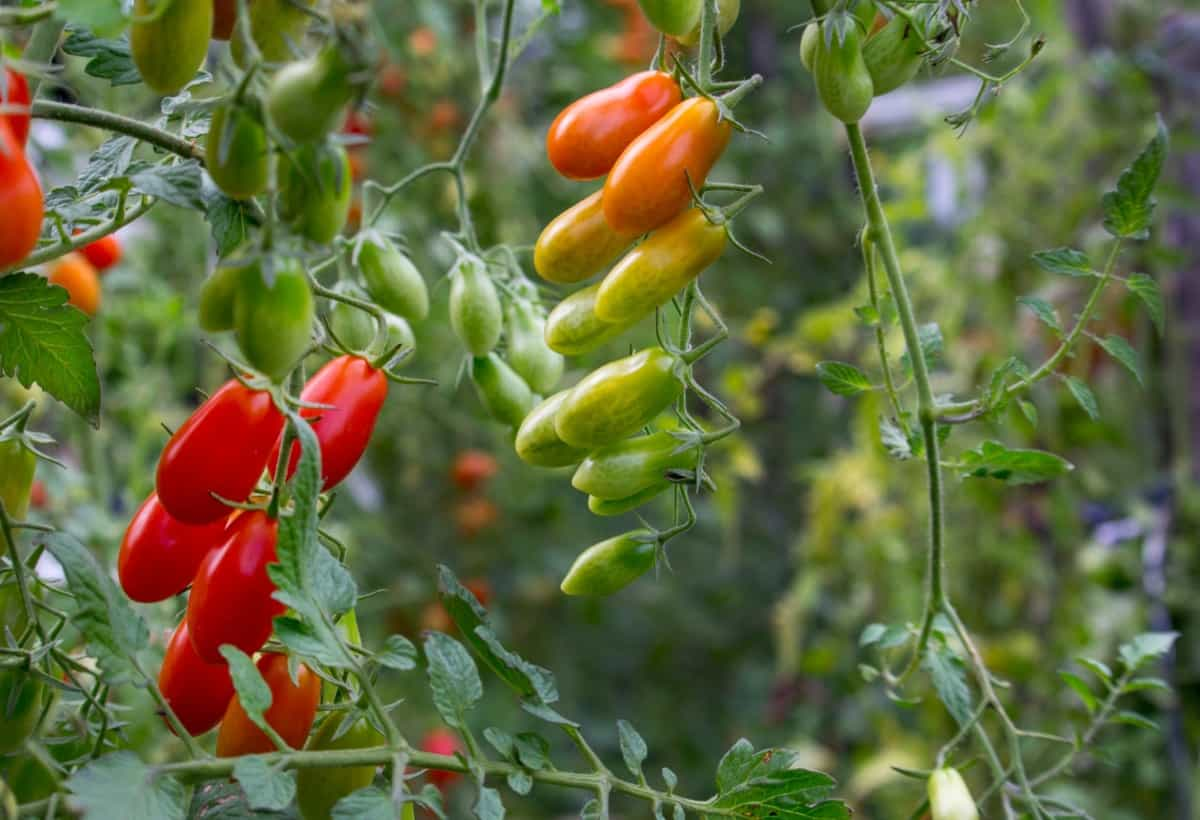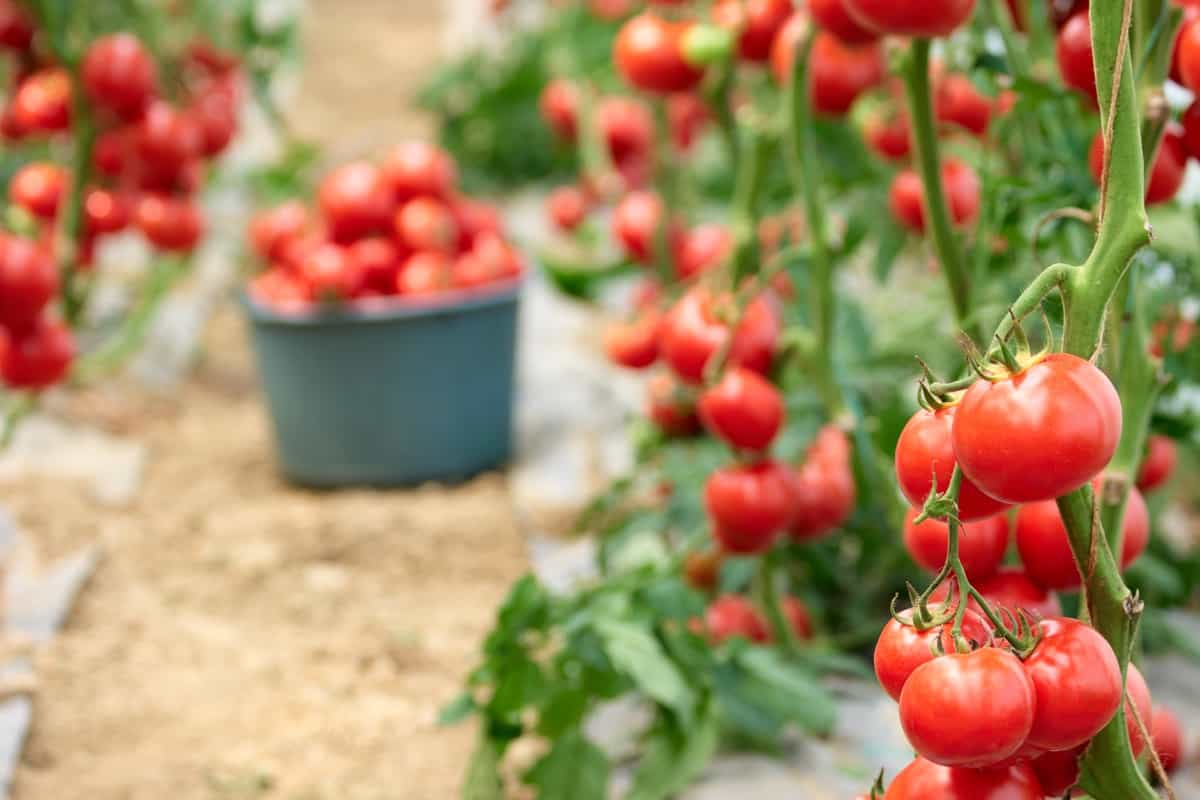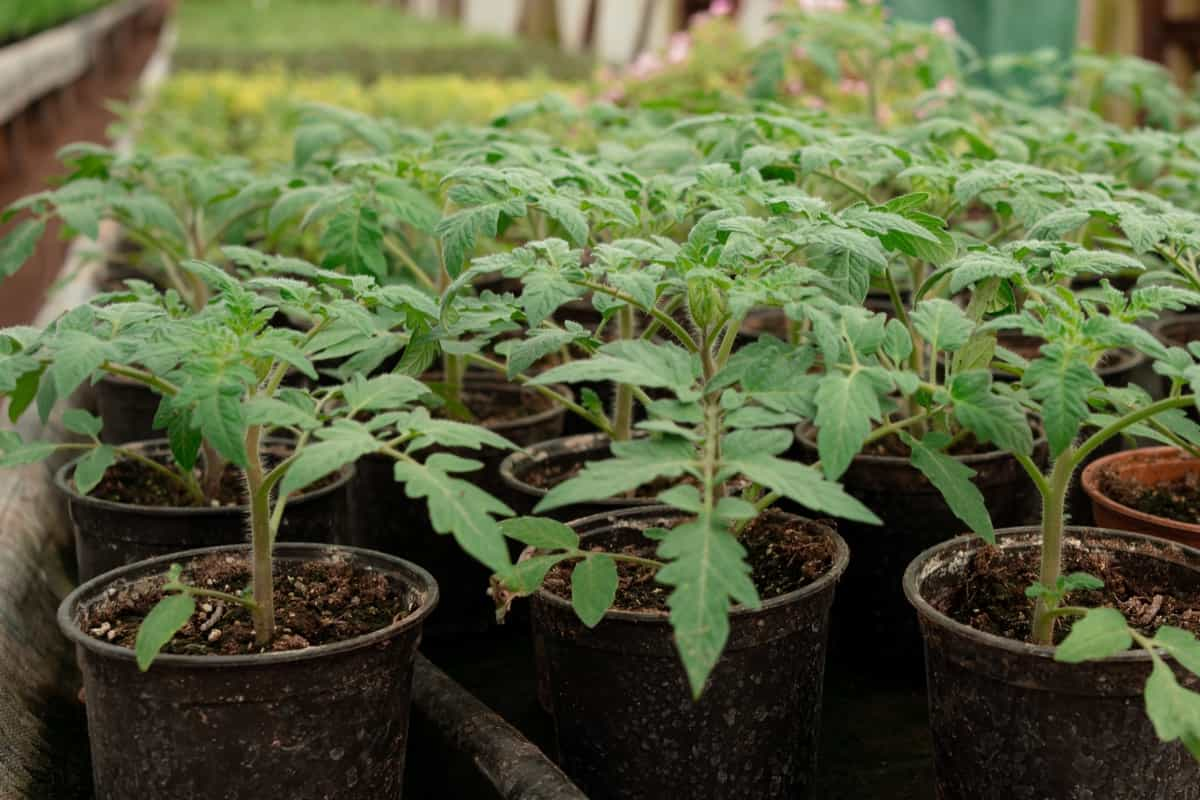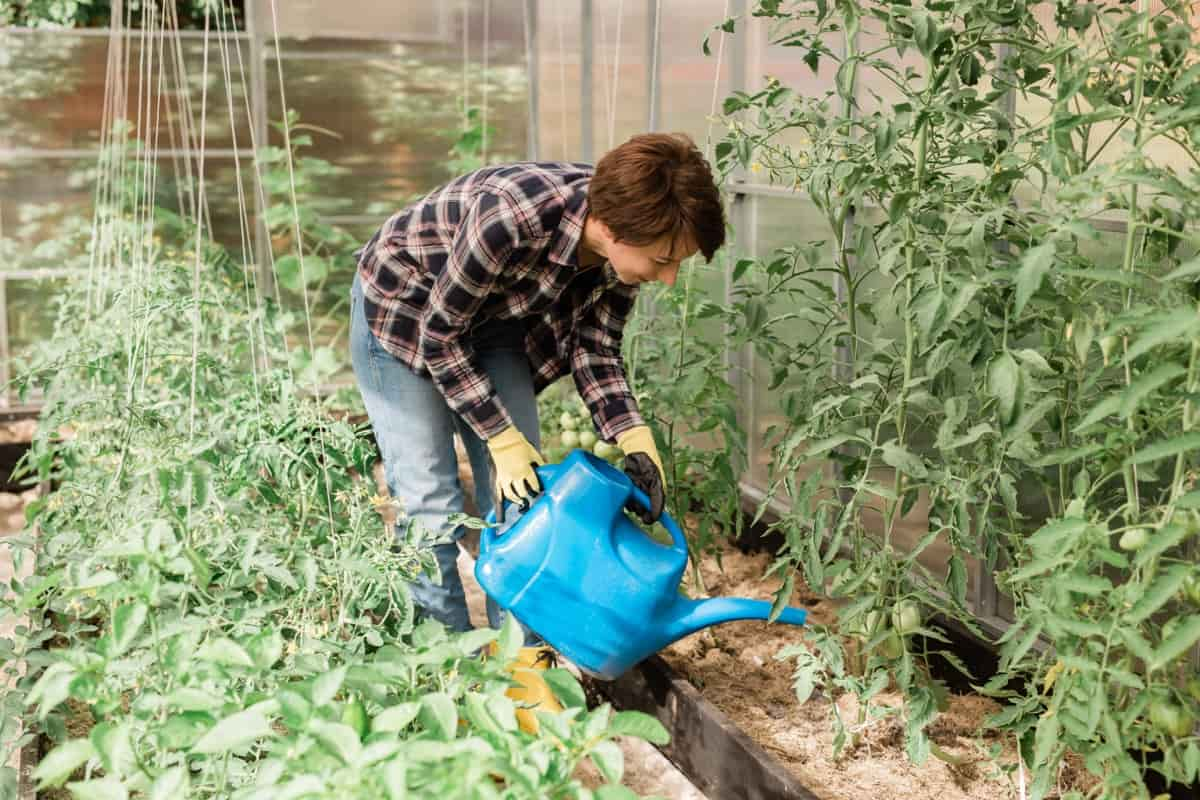Gardening is an enjoyable hobby that offers fresh, organic produce and supports a healthier lifestyle. Among the various garden plants, tomatoes hold a special place, being one of the most cultivated vegetables worldwide. They are a favorite among gardeners, beginners, and experts alike, for their ease of growing and their delightful, juicy fruit.

This article aims to guide you through growing tomatoes in your garden, whether in pots or directly in the ground. It covers the essentials of making tomato plants grow faster and offers insights into their growth timeline and maintenance requirements. It’s designed to help beginners and more experienced gardeners understand the intricacies of growing tomatoes. It offers advice on when to plant tomatoes in pots outside, as well as the ins and outs of growing tomatoes from seeds.
How to Grow and Care for Garden-grown Tomatoes
Best Soil for Growing Tomatoes in a Garden
Understanding the type of soil that best suits your tomato plants is crucial to their growth. Tomatoes thrive in well-drained, loamy soil rich in organic matter. The soil pH should ideally be between 6.0 and 6.8, which is slightly acidic, promoting nutrient absorption and healthy plant growth.
The soil’s composition is even more crucial regarding how to grow tomatoes in pots due to the confined space. Opt for a high-quality potting mix that includes compost, coconut coir, peat moss, and vermiculite or perlite for enhanced drainage. Applying slow-release fertilizer at the planting stage can also give your tomatoes an excellent start.
Pruning Techniques for Tomato Plants in a Garden
Pruning is a useful strategy for controlling your tomato plant’s growth and improving its productivity. As part of tomato plant maintenance, this process involves removing unnecessary leaves and stems to direct the plant’s energy into fruit production. It is especially useful when learning how to make tomato plants grow faster.
Begin by identifying the suckers, the small shoots that grow in the junction between the main stem and branches. Regularly remove these suckers to increase airflow, reduce disease transmission, and redirect the plant’s energy into fruit growth. However, be careful not to over-prune, as leaves are necessary for photosynthesis.
Watering Schedule for Garden-grown Tomatoes
Proper watering is crucial for healthy tomato growth, especially for those wondering how to grow tomatoes from seeds. Tomato plants need consistent moisture levels. Water deeply but sparingly to promote deep root growth, ensuring a strong base and increased nutrient availability.
Aim for 1-2 inches of water per week, adjusting for the weather. During hot, dry periods, you may need to water more often. However, watering should be more frequent when growing tomatoes in pots, as pots tend to dry out faster. Be consistent to avoid problems like blossom end rot.
In case you missed it: 15 Plants to Avoid Planting With Tomatoes

Fertilizer Requirements for Tomato Plants in a Garden
Proper nutrition is vital for optimal tomato growth. A balanced tomato fertilizer should contain nitrogen, phosphorus, and potassium, known as N-P-K. Nitrogen promotes leafy green growth, phosphorus aids root and flower development, and potassium ensures overall plant health.
When fertilizing your tomatoes, especially when learning how to plant tomatoes in the ground, it’s important to remember that too much nitrogen can lead to lush foliage at the expense of fruit production. Regularly test your soil to maintain the right nutrient balance, adjusting your fertilization strategy as necessary throughout the tomato plant growth timeline.
Preventing and Treating Common Tomato Diseases in a Garden
Tomato plants are susceptible to several diseases. Early blight, late blight, and tomato wilt are among the most common. Prevention is always better than cure, so rotate your crops yearly to break the disease cycle, ensure proper spacing for good airflow, and water the soil, not the leaves, to keep them dry and less hospitable to disease organisms.
Remove and dispose of infected plant parts immediately. In extreme cases, organic or synthetic fungicides may be used. For those growing tomatoes for beginners, understanding disease signs and taking quick action can make a huge difference in your harvest.
Optimal Sunlight Exposure for Garden-grown Tomatoes
Sunlight is essential for your tomatoes to perform photosynthesis and produce sugar, which becomes the delicious fruit. Tomato plants require at least 6-8 hours of direct sunlight daily. However, they might need some afternoon shade during intense heat to prevent sunscald. If you’re wondering when to plant tomatoes in pots outside, it’s best when the risk of frost has passed and the days are consistently warm, with plenty of sunlight.
Supporting Tomato Plants With Stakes or Cages in a Garden
Support is necessary for tomato plants to maintain their structure and health. Staking and caging are two common methods. Stakes should be around 6 feet tall, with the tomato plant tied loosely to the stake as it grows. Cages offer a different approach, supporting the plant from all sides and providing an excellent option for growing tomatoes in pots.
In case you missed it: Nematode Control in Tomato Plants: Effective Methods

They should be strong enough to support the weight of full-grown tomato plants laden with fruit. Regardless of your chosen method, adding support when planting tomatoes in the ground will ensure better air circulation, easier harvesting, and healthier plants.
Harvesting and Storing Tomatoes From a Garden
Knowing when and how to harvest your tomatoes is as important as growing them. Tomatoes are ready to harvest when fully colored and slightly soft when gently squeezed. Once harvested, tomatoes should be stored at room temperature and away from direct sunlight. Storing tomatoes in the refrigerator can cause them to lose flavor. Remember that the tomato plant growth timeline from planting to harvesting can vary from 50-100 days, depending on the variety and growing conditions.
Companion Planting With Tomatoes in a Garden
Companion planting involves growing plants together that benefit each other. Certain plants can deter pests, improve soil, or enhance the growth of tomato plants. Basil is a classic companion for tomatoes, said to improve their flavor while repelling pests. Marigolds are also a good option as they deter nematodes. When planting tomatoes in the ground, consider these companions for healthier, tastier tomatoes. Companion planting is a technique well-suited for beginners and experienced gardeners alike.
Managing Pests That Affect Tomato Plants in a Garden
Pests can present a significant challenge in tomato cultivation. Common tomato pests include aphids, hornworms, and nematodes. Regular inspections can help you spot and manage pests early before they cause significant damage. Natural methods like introducing beneficial insects (e.g., ladybugs for aphids) or organic sprays can control pests without damaging your plants or the environment. Prevention is the best form of pest control, so keep your garden clean, rotate your crops, and practice companion planting.
In case you missed it: From Seed to Harvest: How to Grow and Care for Brandywine Tomatoes

Conclusion
With these insights and tips, you should be well on your way to growing healthy, fruitful tomato plants in your garden. Whether planting them in the ground or learning how to grow tomatoes in pots, these principles hold. Growing tomatoes requires time, patience, and care, but the reward of fresh, home-grown tomatoes is well worth the effort. So roll up your sleeves, grab your gardening gloves, and let’s get planting!
- Feed Your Flock for Less: Top 10 Tips to Save on Chicken Feed
- Ultimate Guide to Ossabaw Island Hog: Breeding, Raising, Diet, and Care
- Hatching Answers: The Top 10 Reasons Your Chickens Aren’t Laying Eggs
- Eggs and Economics: Breaking Down the Cost of Raising Backyard Chickens
- Defend Your Greens: Proven Methods to Keep Iguanas Out of Your Garden
- Ultimate Guide to Cinnamon Queen Chicken: A Comprehensive Guide for Beginners
- Ultimate Guide to California Tan Chicken: Breeding, Raising, Diet, Egg-Production and Care
- Ultimate Guide to Marsh Daisy Chicken: Breeding, Raising, Diet, and Care
- 10 Types of Chicken Farming Businesses You Can Start for Profits